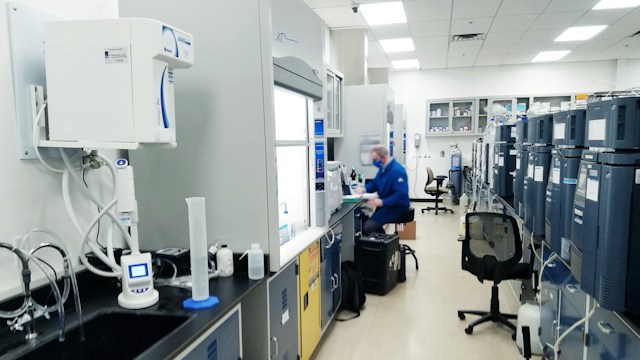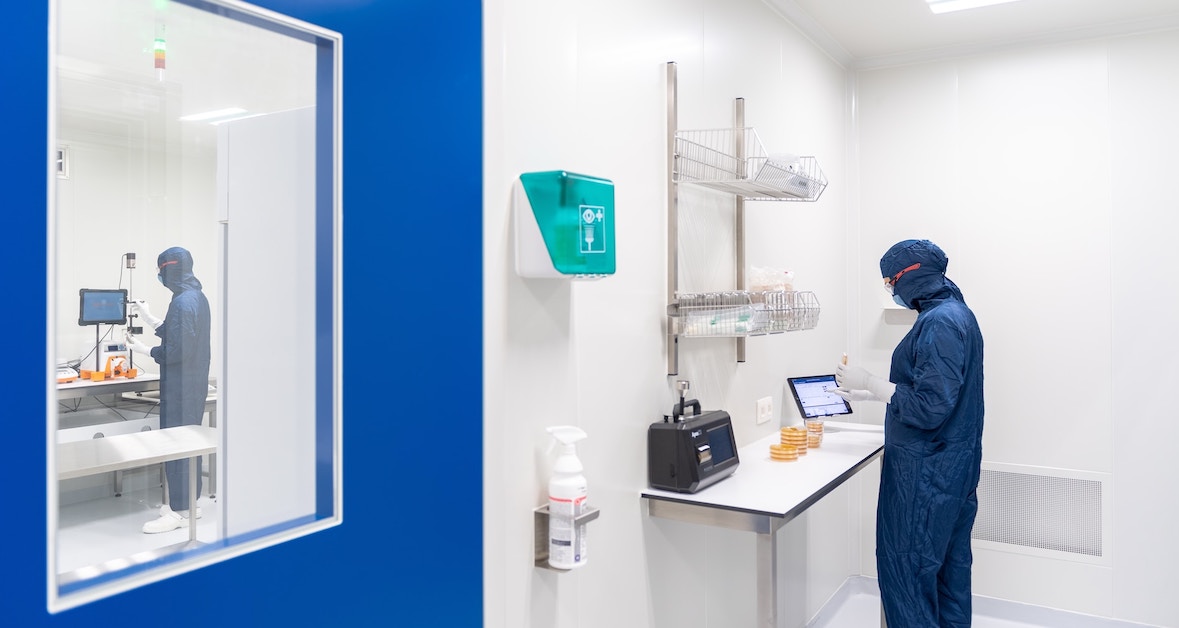Emergency eye wash station instructions provide clear and essential guidance on how to use specialized equipment to rinse and flush the eyes effectively in the event of chemical exposure or eye injuries in workplaces and laboratories
In workplaces, laboratories, and industrial settings, the safety of employees is paramount. One critical aspect of workplace safety involves being prepared to handle eye injuries or chemical exposures promptly. Emergency eye wash stations play a crucial role in providing immediate relief and preventing further damage in such situations. In this guide, we will delve into the essential instructions for using these stations effectively and safely.
Emergency eye wash station instructions – The equipment
Components
- Eye wash unit: The core component of an eye wash station is the eye wash unit itself. It typically consists of a nozzle or faucet that delivers a continuous stream of flushing fluid to the eyes.
- Flushing fluid: Sterile saline solution is the most common flushing fluid used in eye wash stations. It is essential to ensure that the solution is kept clean and at the appropriate temperature for effective eye rinsing.
- Signage: Clear and visible signage indicating the location of the eye wash station is crucial for quick access during emergencies.
- Access path: Maintaining an unobstructed path to the eye wash station is vital to ensure immediate accessibility.

Proper usage of the eye wash
Emergency eye wash station instructions – Understanding how to correctly utilize an emergency eye wash station is of paramount importance, particularly in situations involving eye injuries or chemical exposures. By following these step-by-step instructions, individuals can significantly enhance their safety and well-being when faced with eye injuries or chemical exposures. Remember, quick and accurate response to such emergencies is essential for protecting one’s vision and overall eye health.
Here’s a step-by-step guide to ensure the effective use of an emergency eye wash station:
- Activate the eye wash: In the event of an emergency, your first action should be to quickly locate and activate the eye wash station. Typically, this entails pulling a lever or pushing a clearly marked button, making the flushing fluid accessible.
- Position your eyes: After activating the station, position your face directly over the eye wash basin. Ensure that both of your eyes are precisely under the stream of flushing fluid to guarantee comprehensive coverage.
- Open your eyes: Forcefully open your eyes, keeping your eyelids wide apart. This is a critical step to enable the flushing fluid to reach all areas of your eyes effectively. By doing so, you maximize the removal of any contaminants.
- Begin rinsing: Once your eyes are in the proper position, allow the flushing fluid to flow continuously over them. If necessary, use your hands to hold your eyelids open to ensure the fluid’s unimpeded access to your eyes.
- Rinse for the recommended time: Continue rinsing your eyes for the recommended duration, which is typically a minimum of 15 minutes. This extended rinsing period is crucial to guarantee that any harmful substances are thoroughly flushed out, promoting a swift and complete recovery.
- Seek medical attention: Even after utilizing the eye wash station, it remains imperative to seek immediate medical attention. A healthcare professional can assess the extent of the injury, provide additional treatment, and ensure that there are no long-term complications.

Emergency eye wash station instructions – Safety precautions
In addition to knowing how to properly utilize an emergency eye wash station, observing safety precautions is equally critical to minimize the risk of further harm during an eye emergency.
A primary safety precaution involves maintaining the purity of the flushing fluid within the eye wash station, as contamination can worsen the injury. To ensure this:
- Avoid making contact with the nozzle or faucet using your hands or any other objects. The presence of contaminants on your hands or items may introduce impurities into the flushing fluid, rendering it ineffective or potentially harmful.
- Regular upkeep and cleanliness of the eye wash station are imperative to guarantee its readiness for use when the need arises. Follow these cleanliness guidelines:
- Periodically examine the eye wash station to ensure it is devoid of debris, dirt, or any obstructions. Blockages can impede the station’s proper operation during an emergency.
- Preventative measures play a pivotal role in eye safety. When working in environments where eye hazards are prevalent, wearing suitable personal protective equipment (PPE) is imperative. Consider the following essential precautions:
- Always don safety goggles or face shields to shield your eyes from potential hazards. These protective measures serve as a barrier, substantially reducing the risk of sustaining eye injuries in hazardous work settings.
By heeding these safety precautions, individuals can not only ensure the effective use of an emergency eye wash station but also minimize the likelihood of complications or aggravation of injuries. It is important to emphasize the significance of maintaining uncontaminated flushing fluid, regularly inspecting the station for cleanliness, and consistently wearing appropriate PPE. These proactive measures collectively contribute to enhancing overall eye safety in workplaces and any environments where the potential for eye hazards exists.
Workplace regulations and training
Emergency eye wash station instructions ensure the proper functioning and utilization of emergency eye wash stations and involves two vital components: regulatory compliance and employee training.
Workplace safety regulations frequently dictate the necessity of having accessible eye wash stations in areas where potential eye hazards are prevalent. These regulations are put in place to safeguard the well-being of employees, emphasizing the importance of adhering to workplace safety standards. Employers bear the responsibility of ensuring regulatory compliance by providing and maintaining functional eye wash stations in designated areas. Failure to comply with these regulations not only jeopardizes employee safety but may also result in legal repercussions.
In addition to regulatory compliance, comprehensive employee training is equally crucial. Employers should take proactive measures to educate their workforce on the location and correct usage of eye wash stations. This training encompasses:
Employees should be well-informed about the precise locations of eye wash stations within their workplace. This knowledge ensures quick access during emergencies when every moment counts. Employees must be trained on the correct procedures for using eye wash stations, emphasizing the importance of swift and effective action in case of eye injuries or chemical exposures. To enhance preparedness, conducting regular drills and exercises is highly beneficial. These simulated scenarios enable employees to become familiar with emergency procedures and instill a swift and efficient response mindset. By investing in both regulatory compliance and thorough employee training, employers can establish a safer workplace environment and reduce the potential risks associated with eye hazards.
If you want more information on the topic eye showers and safety equipment, please visit www.nordicinformer.com/eye-shower-curtain/



